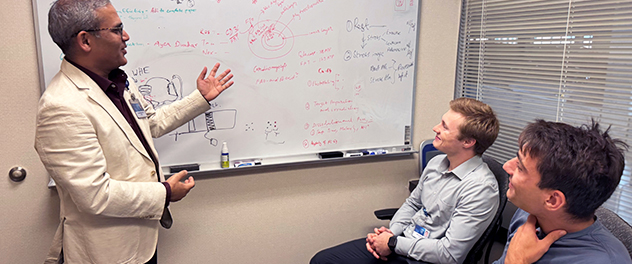 Mentoring the next generation of scientists and physicians
Mentoring the next generation of scientists and physicians
The lab's research focuses on designing and developing novel radiopharmaceuticals for oncology, cardiology, neuroscience, neurodevelopmental disorders, infections and regenerative medicine.
Overview
Mayo Clinic's Molecular Imaging and Radionuclide Therapy Laboratory, which is led by Mukesh K. Pandey, Ph.D., seeks to discover and develop novel imaging and radiotherapy probes to noninvasively monitor biochemical processes. The lab applies radionuclide therapy to improve patient health and disease outcomes. Lab team members use probes with nuclear and optical emissions, strongly focusing on positron emitters for positron emission tomography (PET).
We have developed improved PET radiometal production using liquid cyclotron targets, radiometal protein-labeling synthons, GSK-3 targeted PET probes and a variety of radiopharmaceuticals. We perform in vitro and in vivo preclinical imaging evaluations of new probes. The lab has successfully translated several probes to be evaluated in human patients with neurodegenerative diseases and cancer using PET.
The lab uses noninvasive methods to monitor the biochemistry of human diseases at the cellular level. The objective is molecular imaging development, specifically for:
- PET.
- Single-photon emission computerized tomography.
- Optical imaging.
- MRI.
- Radioisotope production, radiochemistry and radiopharmacology.
- Radionuclide therapy.
Molecular imaging and radionuclide therapy improves patient care by providing a clearer understanding of the biochemical status of disease within each patient. This allows for the best treatment options for each patient rather than making treatment decisions based on group averages. Innovative molecular imaging targets help focus interest to a specific aspect of the disease. Such targets can predict patient outcomes. These targets are sensitive to therapy responses and provide early treatment information.